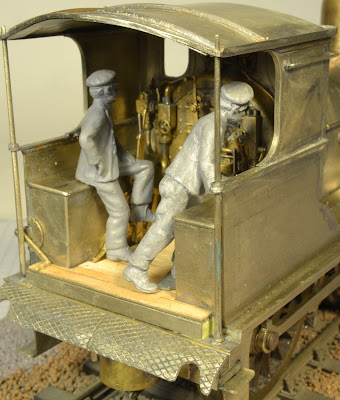 |
| HR Loch an Dorb cab details |
My previous post shows the backhead before I opened up the fire hole and added the mechanism which closed the hole. I modelled the details from photos I'd taken in the Transport Museum in Glasgow of the Loch's near relative the preserved Jones Goods. It seems that the hole was closed by a baffle which was hinged from the top and operated by that ratcheted handle on the right. A hinged grille closed onto this from the bottom though I've modelled the grille simply as a solid plate as I'm not sure how I can represent a grille in this scale.
An oil can, which I modelled on an example on display in Glasgow, is positioned to hide a joint in a pipe on the left hand splasher top where a pipe attached to the backhead meets itself as it emerges from the floor and makes its way to the splasher top rendezvous. The gap is necessary to enable the backhead to be removed.
The slight gap between the roof and the cab front will disappear when the roof is fastened in place at a later stage.
 |
| The two locating holes for the crew on the floor and splasher top are hardly visible. |
I might try a coloured LED behind the fire hole to give a warm glow effect to the cab, possibly even a flicker, but I need to experiment with this, I don't know if I can make it work yet.











